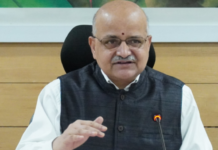New Delhi— Reserve Bank of India (RBI) Governor Shaktikanta Das on Friday said that the current account deficit is “eminently manageable” and within the parameters of viability.
He also emphasised that in the current hostile and uncertain international environment, the Indian economy remains resilient, drawing strength from its macroeconomic fundamentals.
“Our financial system remains robust and stable. Banks and corporates are healthier than before the crisis. Bank credit is growing in double digits. India is widely seen as a bright spot in an otherwise gloomy world. Our inflation remains elevated, but there has been a welcome softening during November and December 2022. Core inflation, however, remains sticky and elevated,” he said, while delivering a keynote address at the 22nd Fixed Income Money Market and Derivatives Association of India- Primary Dealers Association of India’s (FIMMDA-PDAI) annual conference in Dubai.
“Despite slowing global demand weighing on merchandise exports, India’s exports of services and remittances remain strong. The net balance under services and remittances remains in a large surplus, partly offsetting the trade deficit,” he said.
The average current account deficit to GDP ratio stood at 3.3 per cent during the first half of the current fiscal, while the slowing demand is weighing on merchandise exports, Das said, adding that at the same time “our exports of services and remittances remain strong. The net balance under services and remittances remains in a large surplus, partly offsetting the trade deficit”.
Das further noted that in the aftermath of multiple shocks, the global economy is projected to contract significantly in 2023, adding at the same time that “the worst for the global economy, both in terms of growth and inflation, seems to be behind us”.
Lately, with some ebbing of Covid-related restrictions and cooling of inflation in various countries, though still elevated, central banks have started what appears to be a pivot towards lower rate hikes or pauses. At the same time, they continue to emphatically reiterate their resolve to bring inflation down closer to targets.”
On the growth front, the RBI Governor noted that projections are now veering around to a softer recession as against a severe and more widespread recession projected a few months back.
Stressing on the need to strengthen bilateral trade relations to deal with global supply-chain shocks, he said that India has recently signed bilateral trade agreements with the UAE and Australia and more such agreements are works in progress.
He also said that the net FDI flows remain strong and foreign portfolio flows have resumed since July 2022, with intermittent outflows from time to time.
“The size of forex reserves is comfortable and has gone up from $524 billion on October 21, 2022 to $572 billion as on January 13, 2023. Further, India’s external debt ratios are low by international standards. This has enabled the Reserve Bank to eschew measures to control capital flows and take steps to further internationalise the domestic currency, even during episodes of significant capital outflows,” he said.
Referring to the ever depreciating trajectory of the rupee, Das said that the currency’s performance in terms of volatility remained “impressive”.
“For example, the one-month implied volatility of the rupee touched a high of 25 per cent during the global financial crisis on October 10, 2008 and 20 per cent during the taper tantrum period on August 29, 2013. During the Covid-19 pandemic, however, the implied volatility peaked at 10 per cent on March 24, 2020 and has remained well anchored thereafter, despite the uncertainties associated with the war and monetary tightening by major central banks,” he said.
Commenting on the global scenario, Das said that the global economy is still marred by shocks and uncertainty. Financial markets remain volatile and the geopolitical situation continues to be tense. International food, energy and commodity prices have eased but uncertainties do remain. Inflation remains high and broad-based across countries. The IMF has projected contractions in over one-third of the global economy. (IANS)







